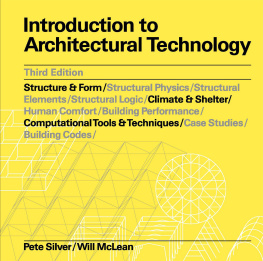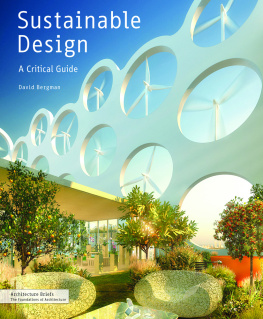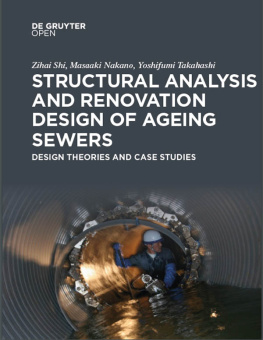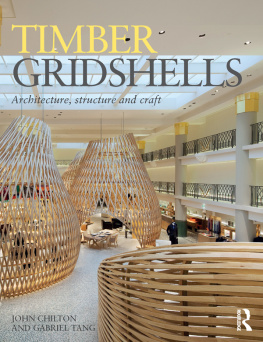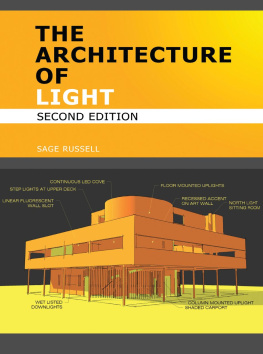Contents
Guide
Introduction to Architectural Technology Third edition
Pete Silver
Will McLean
Introduction to Architectural Technology Third edition
Pete Silver
Will McLean
Laurence King Publishing
An imprint of Quercus Editions Ltd
www.laurenceking.com/student/

Published in Great Britain by
Laurence King Student & Professional
An imprint of Quercus Editions Ltd
Carmelite House
50 Victoria Embankment
London EC4Y 0DZ
An Hachette UK company
Third edition published in 2021
2008, 2013, 2021 Pete Silver and Will McLean
The moral right of Pete Silver and Will McLean to be identified as the authors of this work has been asserted in accordance with the Copyright, Designs and Patents Act, 1988.
All rights reserved. No part of this publication may be reproduced or transmitted in any form or by any means, electronic or mechanical, including photocopy, recording, or any information storage and retrieval system, without permission in writing from the publisher.
A CIP catalogue record for this book is available from the British Library
TBP ISBN 978-1-78627-681-0
E-BOOK ISBN 978-1-52942-321-1
Quercus Editions Ltd hereby exclude all liability to the extent permitted by law for any errors or omissions in this book and for any loss, damage or expense (whether direct or indirect) suffered by a third party relying on any information contained in this book.
US Consultant: Dason Whitsett
Design concept: Hamish Muir
Picture Research: Annalaura Palma, Peter Kent
Dedicated to the memory of James Madge

National Aquatic Centre, Beijing, China (detail), designed by CSCEC International Design and Architects Peddle Thorp Walker in conjunction with Arup Engineers and Vector Foiltec.
Contents
Introduction
Aerodynamics is for people who cant design engines. Enzo Ferrari
Both structurally and environmentally, the architect designs the way in which buildings are organized. Along with the art the social, cultural, philosophical and political factors that influence design it is the tools and techniques of the engineer technology that give form and performance to the built environment.
Critical to an understanding of architecture is the relationship between design and technology. The aim of this textbook is to introduce the scope of that relationship to those who may be considering a career in architecture, as well as to enable students of architecture to integrate their design thinking with appropriate structural and environmental solutions.
The book sets out to explain the relationships between physical phenomena, materials, building elements and structural types, using simple classification systems and real examples. Photographic images are used to familiarize the user with common construction technology, while historical examples are employed to chart significant moments in the history of architectural engineering.
The book introduces structural and environmental engineering to architects and, while it does not include mathematical calculation, it does make reference to current computer techniques that assist designers in predicting the structural and environmental behaviour of buildings. At the same time, it makes liberal reference to historical precedents since it is important for the user to understand that the way in which the success of technology is measured is directly related to its cultural context. Some would say that the Gothic cathedral is the pinnacle of architectural engineering given the tools, materials and techniques of the day. Currently, the world is far more conscious of the clean and efficient use of the planets resources, and the success of technology is measured thus.
Technology is by nature concerned with invention, and it is only ever possible to take a snapshot of technological achievements at any one moment in time. From materials science through to construction site procedures, invention and progress in architectural technology occur constantly; it is hoped that a compendium of technology such as this book will not only aid students to understand its scope and historical context, but will also inspire them to invent new solutions for the future.
Third Edition
This third edition builds on the amendments and additions to the second.
The Structural Logic chart has been significantly developed in order to include cable-hung structures and to re-categorize three-dimensional surfaces as fundamentally anticlastic or synclastic in form.
A spread on passive building principles for different climate zones has been added to the section on building performance.
Further detailed drawings have been added to the section on weathering.
In the section on computational tools and techniques, the authors have included a description of parametric modelling.
The introduction to the Case Study section has been expanded to include a brief history of the evolution of architectural technology. Six new case studies of unique and exemplary structures from the past and present have been added.
Structure of the book
Architectural technologies are classified under two major headings: Structure and Form, and Climate and Shelter. While the very first primitive shelters, such as mud huts and igloos, employed the same materials and building components to both create structural form and withstand the elements, even a simple tent such as the North American tepee employed one type of material and component (timber posts) to generate the form and another (animal skins) to maintain its internal climate.
Structure and Form
This section is subdivided into three main topics: Structural Physics, Structural Elements and Structural Logic. This is a linear progression from the fundamental principles of structural form materials science, materials technology and structural integrity through descriptions of the common elements used in the construction of buildings, such as walls, columns, floors and roofs, to how these elements are combined to form different building types, from simple post and beam structures through Gothic vaults to aluminium monocoque shells and tensile nets.
Climate and Shelter
The subdivisions in this section deal with two main topics: Human Comfort and Building Performance. Before examining how buildings are constructed in relation to their local environment, it is important to establish the thresholds within which the human body is able to sustain life. The first part of the section looks at the principles of thermal comfort and its provider, the sun.
The second part considers ways in which the built environment can be designed to maintain human comfort. As well as exploring how the design and fabric of a building the climatic envelope can both control and interact with its environment, passively and actively, it considers human comfort in the context of sound and light.
The book includes three additional sections:
Computational Tools and Techniques
The ways in which architects design are now much influenced by computers. Quite apart from their use in drafting and illustrating, they may assist designers to predict both the structural and environmental behaviour of their buildings through modelling and analysis as well as supplying databases for materials, components and systems; indeed they can store, and create a virtual model of, all of the information needed for a construction project. This section explores the use of computers as analytical and organizational tools.

